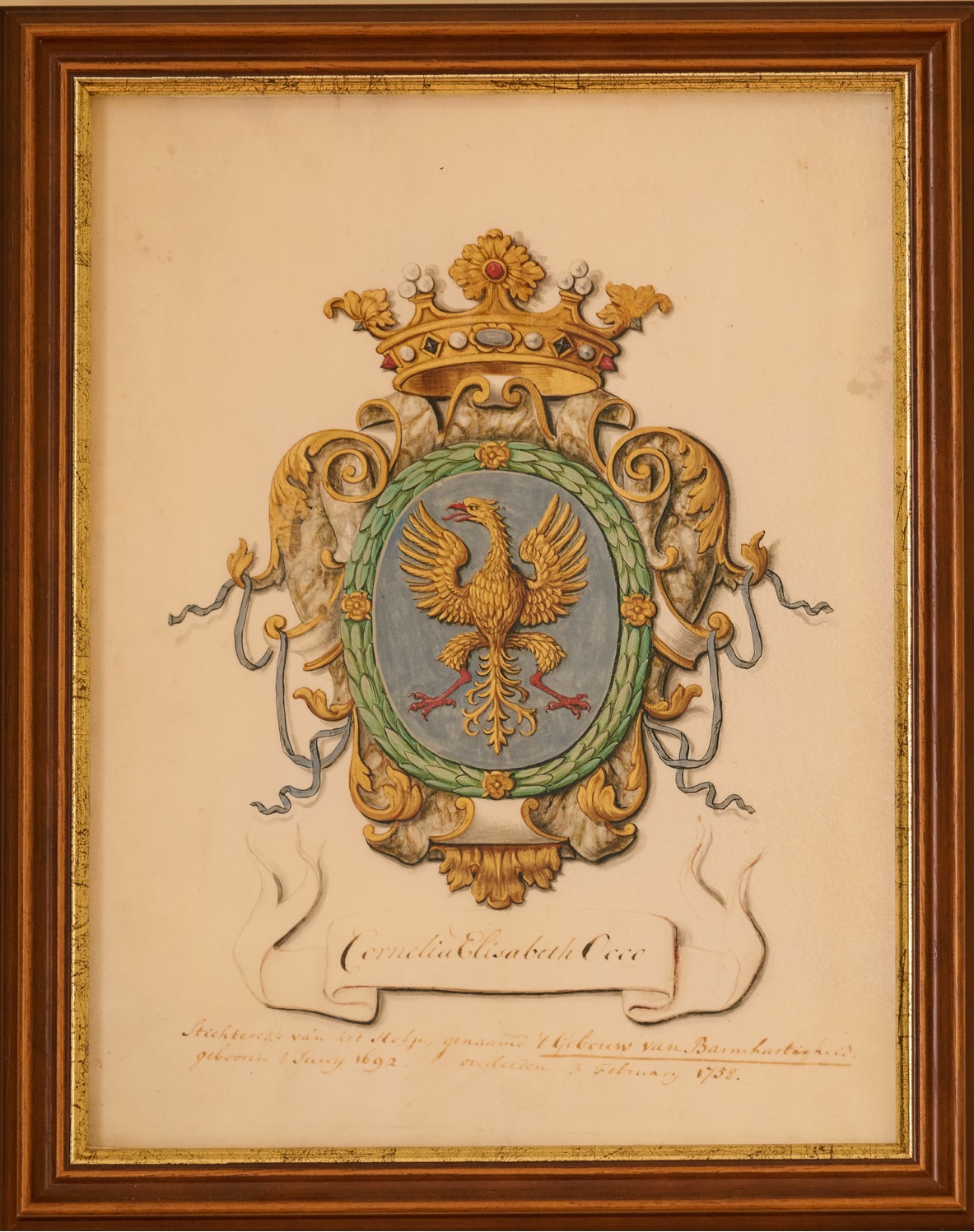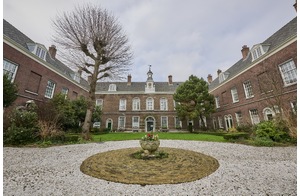Cornelia Elisabeth Occo (1692–1758) was active as an international investor and was the founder of the almshouse called The Building of Mercy.
Location
Occo Hofje
Nieuwe Keizersgracht
Type
Hofje
Religious community
Roman Catholic Church
Maker and date
Maker unknown
Date unknown
Visit
Not open to visitors
Cornelia Occo is the eldest daughter in a prominent Catholic family. On June 8, 1692, she is baptized in ’t Boompje, the Amsterdam hidden church on the Rokin with which her family maintains close ties. Despite her family’s good connections, she does not succeed in finding a marriage partner. After the death of her parents, Cornelia comes into conflict with her brother and brother-in-law and, at the age of 46, leaves the family home on the Keizersgracht. She rents her own house on the Herengracht and becomes active as an international investor to provide for her income.
The Catholic faith is a natural and integral part of Cornelia’s daily life. Her letters show that she faithfully celebrates Catholic feast days and observes customs such as Lent and Advent. She also tries to perform Catholic rituals in public spaces, which is officially forbidden. Receipts in her archive reveal that she makes a pilgrimage every year to the Runxput in Heiloo, an important site of Marian devotion. She also performs the Stille Ommegang (“Silent Procession”). She recorded the route and accompanying actions — such as circling the Saint James Chapel once in prayer and the Old Church twice in prayer — in a notebook. When she becomes less mobile, she hires a small carriage to complete the procession.
Regents’ Room of the Occo Almshouse. The regents who form the board of the Occo Almshouse Foundation are currently mostly members of the Belgian family Gillès de Pélichy, descendants of Cornelia Occo. They meet only a few times a year in this room, where their ancestors look down upon them from the walls.
Charity is also an integral part of her faith. Her most significant act of charity only came to light after her death in 1758, when it was revealed that she had left the greater part of her fortune for the construction of an almshouse for Catholic widows and unmarried women, preferably from Amsterdam. The almshouse was built in 1774 on the Nieuwe Keizersgracht by Lucas Pompejus Occo (1700–1777), the brother with whom she had remained estranged for many years. For 250 years now, the Occo Almshouse has provided housing for single, elderly (Catholic) women.
Vibeke Kingma
Independent researcher, socio-economic historian
Thanks to
Charlotte de Cloet-Downey
Last edited
October 26, 2025
Coat of arms of Cornelia Elisabeth Occo, undated 18th century, ink and paint on parchment, 21 x 27.5 cm. Archive of the Occo Hofje Foundation, Amsterdam.
Photo interior and exterior: Robert Westera
Notebook with recipes by Cornelia Elisabeth Occo, motto in the front dated 1706, ink on paper, 10.3 x 15.8 cm. Archive of the Occo Hofje Foundation, Amsterdam
Regent's room in the Occo Hofje, 2025. Photo Robert Westera. Collection Museum Ons' Lieve Heer op Solder.
Looijesteijn, H. en V. Kingma, Salig sijn de barmhertigen, 250 jaar Occo Hofje, 1774-2024 (Hilversum 2025).
Online sources
Het Occo-hofje, een ‘Gebouw van Barmhertigheijt’ interview met Vibeke Kingma en Henk Looijesteijn
Last visited 26-10-2025









